News Beat
News Beat reporting is an idrw.org initiative to let our Readers to report News Based on Actual facts but some how has not been reported in Main Stream Media .
SOURCE: RAUNAK KUNDE / NEWS BEAT / IDRW.ORG


Hindustan Aeronautics Limited (HAL) has announced a clear roadmap for the Tejas Mk2, India’s advanced 4.5-generation Light Combat Aircraft (LCA), with production slated to commence by 2029 following its first flight in the first quarter of 2026 (April–July). The program, a cornerstone of India’s Atmanirbhar Bharat initiative, will undergo an intensive three-year testing phase, involving four pre-production jets to accelerate development. This milestone positions the Tejas Mk2 to strengthen the Indian Air Force (IAF) with deliveries expected from 2032 onward.
The Tejas Mk2, also known as the Medium Weight Fighter (MWF), is designed to surpass the capabilities of the Tejas Mk1 and Mk1A, featuring a larger airframe, close-coupled canards, a General Electric F414-INS6 engine, and cutting-edge avionics, including an Active Electronically Scanned Array (AESA) radar and Infrared Search and Track (IRST) system. With a payload capacity of 6,500 kg and compatibility with indigenous weapons like the Astra and BrahMos-NG missiles, the Mk2 is poised to replace legacy IAF platforms such as the SEPECAT Jaguar, Dassault Mirage 2000, and Mikoyan MiG-29.
Continue readingSOURCE: RAUNAK KUNDE / NEWS BEAT / IDRW.ORG
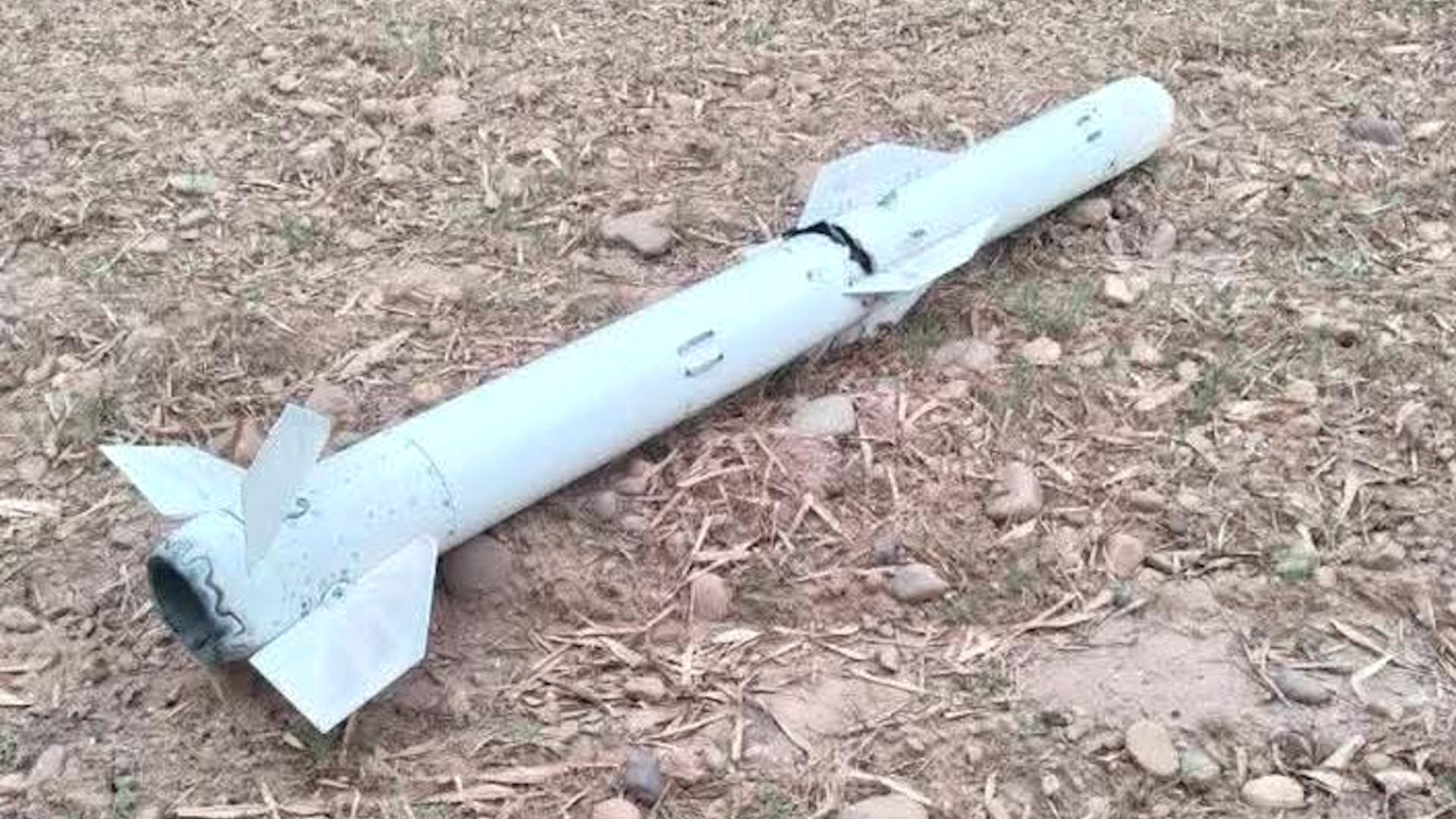

The Pakistan Air Force’s (PAF) much-hyped Chinese-made PL-15E beyond-visual-range air-to-air missiles (BVRAAMs), touted as a game-changer in the recent Operation Sindoor, failed to down a single Indian Air Force (IAF) jet, according to sources who informed Indian Defence Research Wing (idrw.org). The missiles, deployed by PAF’s J-10C and JF-17 Block III fighters, underperformed due to a combination of poor tactics by PAF pilots and effective jamming by India’s advanced electronic warfare (EW) systems. This revelation, backed by the recovery of near-intact PL-15E debris in Indian territory, exposes vulnerabilities in Pakistan’s aerial strategy and raises questions about the missile’s reliability in contested environments.
Operation Sindoor, launched on May 7, 2025, in response to the April 22 Pahalgam terror attack, saw the IAF execute precision strikes on terrorist infrastructure and PAF bases across Pakistan and Pakistan-occupied Kashmir (PoK). During the operation, PAF jets attempted to counter IAF’s Rafale, Su-30MKI, and Mirage 2000 aircraft with PL-15E missiles, which boast a 145 km range, active electronically scanned array (AESA) radar seeker, and dual-pulse motor. However, sources confirm that none of these missiles hit their targets, with multiple PL-15Es recovered in Hoshiarpur, Punjab, on May 7–9, 2025, bearing serial numbers like P15E12203023 and P15E12203039, indicating failed engagements.
Continue readingSOURCE: RAUNAK KUNDE / NEWS BEAT / IDRW.ORG
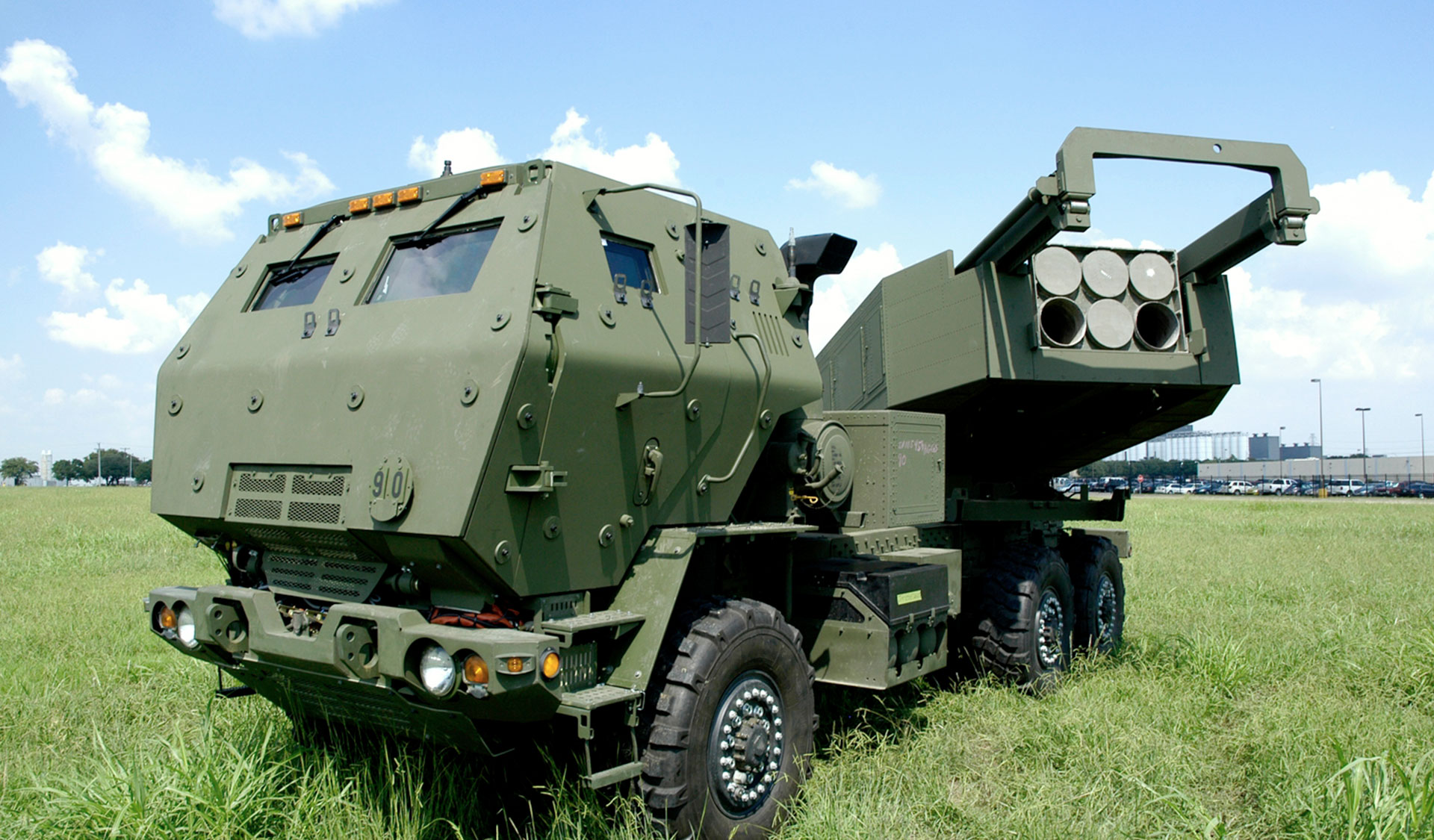

The Indian Army has taken a significant step toward modernizing its artillery capabilities by releasing a Request for Information (RFI) on May 16, 2025, for the procurement of a next-generation, pod-based Multiple Launch Rocket System (MLRS) under the Make in India initiative. This advanced system, designed to enhance the Regiment of Artillery’s firepower, is set to support multiple calibers and operate across diverse terrains, aligning with India’s strategic needs in a rapidly evolving security landscape.
The RFI outlines stringent requirements for the MLRS, emphasizing versatility, mobility, and compatibility with existing and future systems. The system must support multiple calibers—122mm, 214mm, and 300mm or larger—enabling it to fire a range of rockets, including loitering munitions (LM) and all existing or under-development ammunition compatible with these calibers. This multi-caliber capability ensures operational flexibility, allowing the MLRS to engage varied targets with precision and lethality. The pod-based architecture, inspired by systems like the U.S. M142 HIMARS, facilitates rapid reloading and streamlined logistics, enhancing battlefield efficiency.
Continue readingSOURCE: AFI


Hindustan Aeronautics Limited (HAL) has announced a comprehensive modernization program for the Indian Air Force’s (IAF) fleet of 84 Su-30 MKI fighter jets, with a timeline of five years for design and development (D&D) before the rollout of the “Super-30” upgrades. According to HAL officials, this initiative will transform the Su-30 MKI into a cutting-edge platform by replacing legacy avionics with indigenously developed systems, aligning with India’s push for self-reliance in defense technology.
HAL officials have stated that the D&D phase for the Super-30 upgrade program is expected to take approximately five years. This phase will focus on integrating advanced, locally developed technologies into the Su-30 MKI airframe. The upgrades aim to enhance the aircraft’s combat capabilities, situational awareness, and operational flexibility to meet modern warfare requirements.
Continue readingSOURCE: RAUNAK KUNDE / NEWS BEAT / IDRW.ORG


After the resounding success of the BrahMos-A air-launched cruise missile from the Indian Air Force’s (IAF) Su-30MKI fleet, Hindustan Aeronautics Limited (HAL) and the IAF are moving ahead with plans to further expand this potent strike capability. As per information obtained by idrw.org, work will begin later this year to upgrade an additional 20 Su-30MKI fighters to be capable of carrying the 2.5-ton BrahMos-A missile.
Currently, around 40 Su-30MKIs have been modified with hardened wings and reinforced undercarriage to accommodate the heavy BrahMos-A missile, which significantly extends the IAF’s stand-off strike capabilities. These specially modified aircraft have been at the forefront of India’s deterrence posture, capable of delivering precision strikes at long range against high-value land and maritime targets.
Continue readingSOURCE: RAUNAK KUNDE / NEWS BEAT / IDRW.ORG


In what could mark another significant milestone in the growing defence partnership between India and the Philippines, both nations are reportedly close to concluding a deal for the sale of the Akash 1S surface-to-air missile system to the Philippine Marine Corps. This will be the second major defence export from India to the Southeast Asian country after the landmark sale of the BrahMos supersonic cruise missile system in 2022.
According to reliable sources cited by idrw.org, negotiations over pricing and technical terms are progressing positively, and an official announcement regarding the deal is expected in the near future. The acquisition will significantly boost the Philippines’ air defence capabilities amid rising regional tensions in the South China Sea.
Continue readingSOURCE: RAUNAK KUNDE / NEWS BEAT / IDRW.ORG


Following the spectacular battlefield performance of Indian-made loitering munitions such as Nagastra-1, developed by Solar Industries, during recent clashes with Pakistani forces, India’s private defence manufacturers are setting their sights on the global export market. With the systems proving their effectiveness in real-world combat scenarios, international interest in Indian-origin loitering munitions is expected to surge in the coming months.
Sources have told idrw.org that the Indian Ministry of Defence (MoD) has directed several private sector manufacturers to ramp up their export outreach, aiming to capture at least 10% of the global loitering munition market. The MoD sees this as a key segment where Indian defence firms can emerge as strong players due to a combination of combat-proven systems, competitive pricing, and indigenous development free from Chinese components.
Continue readingSOURCE: RAUNAK KUNDE / NEWS BEAT / IDRW.ORG


In a stunning revelation, retired Pakistan Air Force (PAF) Air Marshal Masood Akhtar has confirmed that PAF’s Bholari Air Base, a critical military installation in Sindh province, was struck by four BrahMos supersonic cruise missiles on May 10, 2025, as part of India’s Operation Sindoor. The precision strikes, which targeted a hangar at the base, resulted in the destruction of a Saab 2000 Erieye Airborne Early Warning and Control System (AWACS) aircraft and caused significant casualties among PAF personnel, marking a severe blow to Pakistan’s air defense capabilities.
Bholari Air Base, located near Hyderabad in Sindh’s Jamshoro district, is a cornerstone of the PAF’s Southern Air Command, housing advanced fighter jets like the F-16A/B Block 15 ADF and JF-17 Thunder, as well as the now-damaged Saab 2000 Erieye AWACS. The base, inaugurated in recent years, is strategically positioned to support rapid deployment and maritime operations, making it a vital asset for Pakistan’s defense architecture.
Continue readingSOURCE: RAUNAK KUNDE / NEWS BEAT / IDRW.ORG
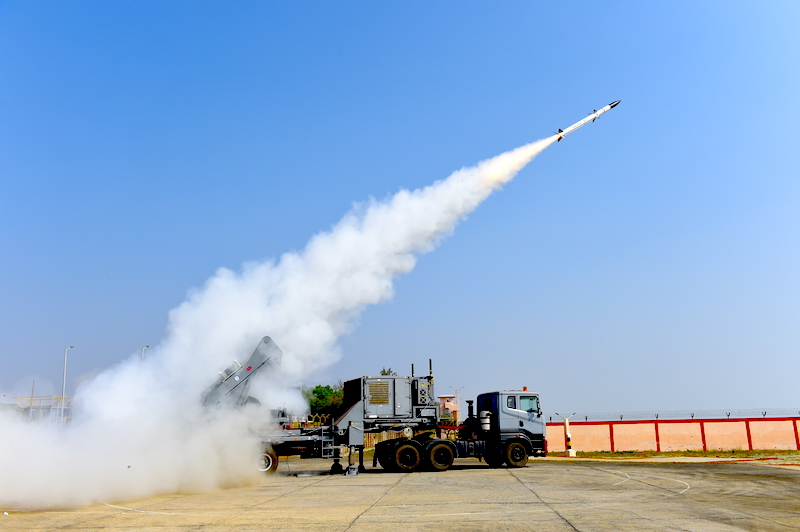

Armenia is deepening its defense ties with India as it prepares to receive the second batch of the Akash-1S air defense missile system after July 2025, following the successful delivery of the first battery in November 2024. This development is part of a $720 million deal signed in 2022 for 15 Akash systems, marking a significant step in Armenia’s efforts to modernize its air defense capabilities amid regional tensions. However, the South Caucasian nation is already looking ahead, expressing keen interest in the next-generation Akash-NG system, which is slated to enter production in 2026, according to sources cited by the Indian Defence Research Wing (idrw.org).
The Akash-1S, an advanced variant of the Akash missile system developed by India’s Defence Research and Development Organisation (DRDO), has already proven its worth for Armenia. Equipped with an indigenous seeker, the Akash-1S enhances hard-kill probability, offering greater precision in engaging aerial threats such as fighter jets, cruise missiles, and drones at ranges up to 30 kilometers. Each battery, manufactured by Bharat Dynamics Limited (BDL) and Bharat Electronics Limited (BEL), includes four launchers with three missiles each and a Rajendra 3D radar, providing robust protection against regional adversaries. Armenia’s acquisition of the system reflects its strategic pivot toward diversifying defense procurement, reducing reliance on traditional suppliers like Russia, which accounted for over 90% of its arms imports between 2011 and 2020.
Continue readingSOURCE: RAUNAK KUNDE / NEWS BEAT / IDRW.ORG


India’s air defense capabilities are set to receive a significant boost as the Indian Air Force (IAF) anticipates the delivery of the fourth regiment of the Russian-made S-400 Triumf air defense system by the fourth quarter of 2025, with the fifth and final regiment scheduled for August 2026. This development, part of a $5.43 billion (?35,000 crore) deal signed with Russia in October 2018 for five regiments, underscores India’s strategic focus on countering aerial threats from Pakistan and China. Despite delays caused by the Russia-Ukraine conflict, the impending deliveries.
The S-400 Triumf, known to NATO as the SA-21 Growler, is a mobile, long-range surface-to-air missile (SAM) system developed by Russia’s Almaz-Antey corporation. Capable of engaging targets at ranges up to 400 km and altitudes of 30 km, the S-400 can intercept fighter jets, ballistic missiles, cruise missiles, and drones, tracking up to 80 targets simultaneously. Each regiment consists of two batteries, with four launchers per battery, supported by multifunction radars like the 91N6E Big Bird and 92N6E Grave Stone, and a 55K6E command module. The system employs four missile types: the 40N6E (400 km range), 48N6E3 (250 km), and shorter-range 9M96E/E2 (40–120 km), offering multi-layered defense against diverse threats.
Continue readingSOURCE: RAUNAK KUNDE / NEWS BEAT / IDRW.ORG
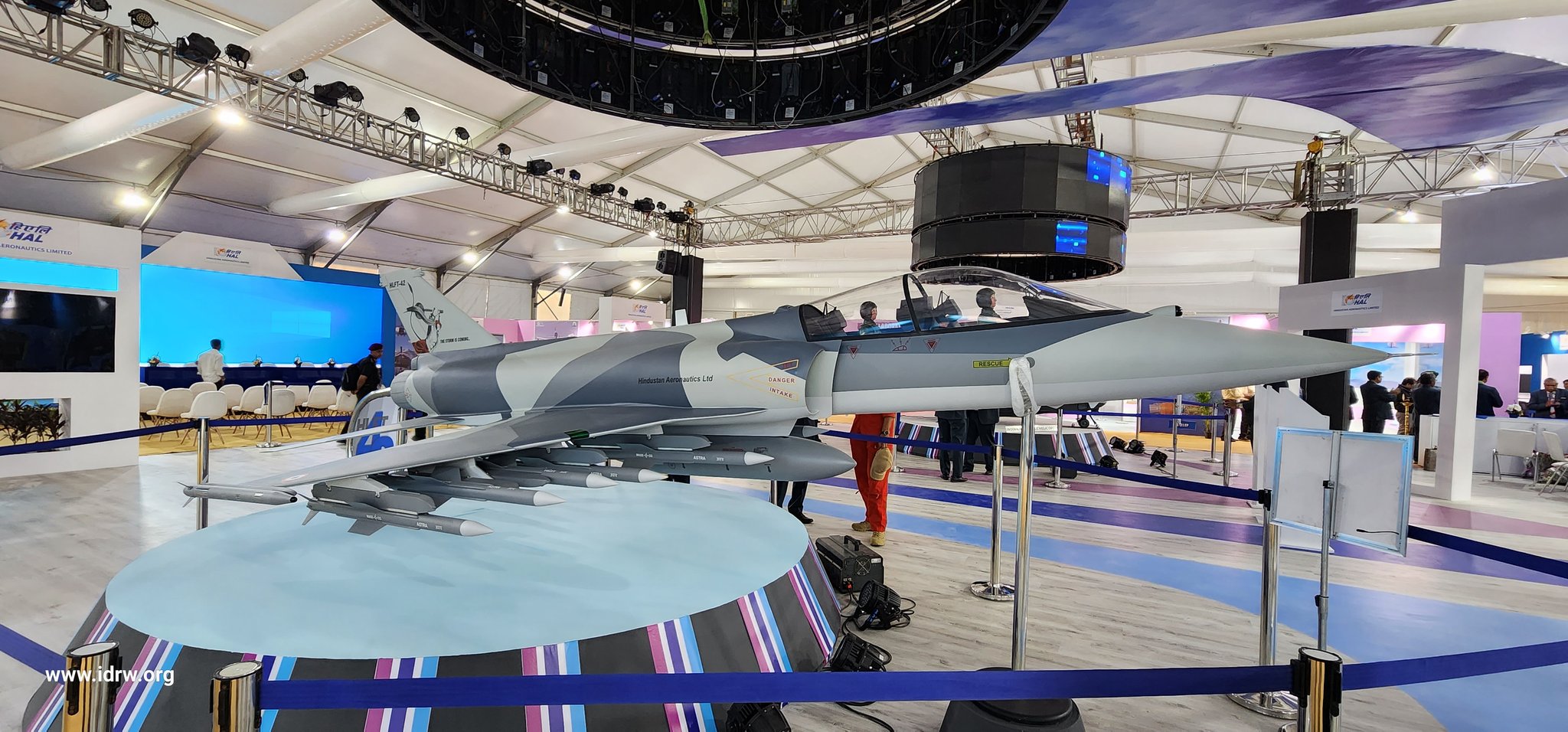

Hindustan Aeronautics Limited (HAL) has officially kicked off the search for a suitable engine to power its ambitious Hindustan Lead-in Fighter Trainer (HLFT-42), a next-generation supersonic trainer designed to prepare pilots for India’s advanced combat aircraft. On March 17, 2025, HAL issued a Request for Information (RFI) to global engine vendors, specifying a thrust requirement of 95-100 kilonewtons (kN) and a total technical life of 6,000 hours.
As the hunt intensifies, the General Electric F414 emerges as the frontrunner, but whispers of HAL’s under-development 110kN engine for the Advanced Medium Combat Aircraft (AMCA) suggest a potential shift toward engine commonality—a move that could redefine the HLFT-42’s role in training future AMCA pilots.
Continue readingSOURCE: RAUNAK KUNDE / NEWS BEAT / IDRW.ORG


In a recent escalation of tensions in the Arabian Sea, the Indian Navy’s deployment of MiG-29K fighter jets armed with two Rampage Air-Launched Ballistic Missiles (ALBMs) has reportedly unnerved the Pakistani military, prompting the Pakistan Air Force (PAF) to deploy F-16 fighter jets to safeguard its strategic Karachi Naval Base and other key assets in the region, according to an official familiar with the development. The Indian Navy’s move, supported by its aircraft carriers INS Vikrant and INS Vikramaditya, underscores its growing maritime dominance and has heightened alertness along Pakistan’s coastline.
The Indian Navy’s MiG-29K, a carrier-based multirole fighter, has recently been integrated with the Rampage air-to-ground missile, a high-speed, long-range weapon developed by Israel. With a strike range of approximately 250 kilometers, the Rampage missile significantly enhances the MiG-29K’s ability to target strategic installations, including naval bases, radar stations, and coastal infrastructure, from a safe distance. The missile’s precision and high-speed low-drag design make it a potent tool for striking high-value targets, as demonstrated by its use by Israel against Iranian military installations.
Continue readingSOURCE: RAUNAK KUNDE / NEWS BEAT / IDRW.ORG


In a significant endorsement of India’s growing defence manufacturing ecosystem, Lockheed Martin, the American aerospace and defence giant, has highlighted the country’s remarkable progress in producing critical components for its C-130J Super Hercules aircraft. According to a recent statement, 96% of the wings for the C-130J, a versatile tactical airlifter used by the Indian Air Force (IAF), are now manufactured in India. This milestone underscores India’s emergence as a key player in global defence supply chains and aligns with the government’s “Make in India” initiative.
The achievement is a result of Lockheed Martin’s collaboration with Tata Advanced Systems Limited (TASL), its Indian partner based in Hyderabad. The Tata-Lockheed Martin Aerostructures Limited (TLMAL) facility has been instrumental in producing complex aerospace components, including the C-130J wings. Since the partnership began, the facility has progressively localized production, reducing reliance on imported components and enhancing India’s self-reliance in defence manufacturing.
Continue readingSOURCE: RAUNAK KUNDE / NEWS BEAT / IDRW.ORG


India has formally requested additional S-400 air defence systems from Russia following the system’s successful deployment during Operation Sindoor, a recent military operation aimed at neutralizing aerial threats from Pakistan. The S-400, known in India as the ‘Sudarshan Chakra’, played a pivotal role in intercepting and destroying incoming missiles and drones, demonstrating its effectiveness in real-world combat scenarios .
The S-400 system, developed by Russia, is one of the most advanced long-range air defence systems globally. It can track targets up to 600 kilometers away and engage them at distances of up to 400 kilometers. The system is capable of firing four different types of missiles, allowing it to engage a variety of aerial threats, including aircraft, drones, cruise missiles, and ballistic missiles .
Continue readingSOURCE: RAUNAK KUNDE / NEWS BEAT / IDRW.ORG
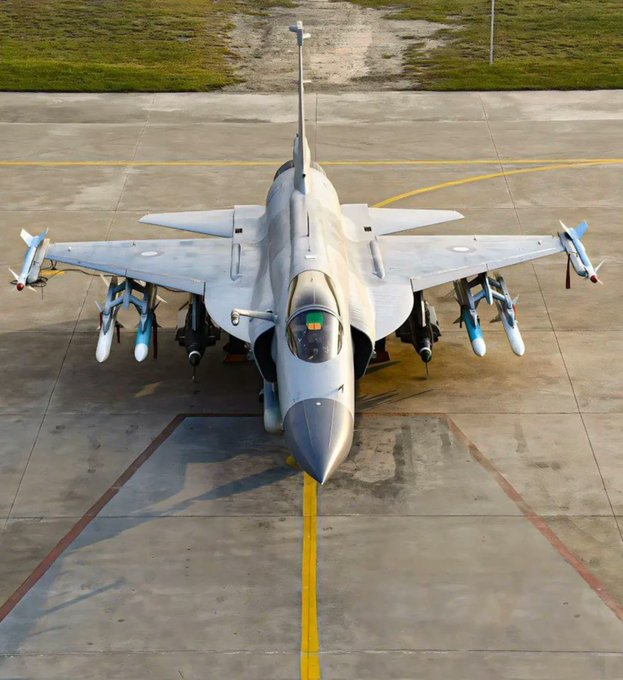

In a powerful display of air superiority, the Indian Air Force (IAF) shot down at least five Pakistan Air Force (PAF) aircraft during Operation Sindoor, a decisive counteroffensive launched in response to the April 22, 2025, Pahalgam terror attack that killed 26 civilians. At a press conference on May 12, Air Marshal AK Bharti, Director General of Air Operations, confirmed that the IAF’s advanced air defense systems (ADS) and fighter jets neutralized several high-tech PAF aircraft, though he refrained from specifying exact numbers.
Sources cited by the Indian Defence Research Wing (idrw.org) revealed that the downed aircraft included one Mirage-5, two JF-17 Thunder jets, one F-16, and an unidentified fifth aircraft. Bharti also hinted at the destruction of a high-value target, widely speculated to be one of Pakistan’s nine Saab 2000 Erieye airborne early warning and control (AEW&C) aircraft, either shot down or damaged in a strike on a hangar at PAF Base Bholari. This article explores the IAF’s aerial triumphs, the role of its anti-drone and air defense systems, and the strategic implications of these losses for Pakistan.
Continue reading